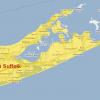-
Posts
3,404 -
Joined
-
Last visited
Content Type
Profiles
Blogs
Forums
American Weather
Media Demo
Store
Gallery
Everything posted by EasternLI
-
I'm thinking that I will. And 12+ for you.
- 1,932 replies
-
- 1
-

-
- heavy snow
- wind damage
-
(and 1 more)
Tagged with:
-
10 am have 3.3 OTG with heavy snow.
- 1,932 replies
-
- 2
-

-
- heavy snow
- wind damage
-
(and 1 more)
Tagged with:
-
Easily Moderate snow right now. Looks to get nuts here shortly based on radar.
- 1,932 replies
-
- 2
-

-
- heavy snow
- wind damage
-
(and 1 more)
Tagged with:
-
What are winds looking like? Seems pretty gusty already.
- 1,932 replies
-
- heavy snow
- wind damage
-
(and 1 more)
Tagged with:
-
Radar is sick. NAM was bonkers. Intensity slowly ramping up here. Looking great.
- 1,932 replies
-
- 1
-

-
- heavy snow
- wind damage
-
(and 1 more)
Tagged with:
-
06 z euro looks good to me. 12+ just about all of LI. Heavy band starting to really come together now. Should be a fun several hours coming up. This thing was a cutter without the blocking. Be happy
- 1,932 replies
-
- 2
-

-
- heavy snow
- wind damage
-
(and 1 more)
Tagged with:
-
Light snow started in Riverhead at 10 pm. Feeling pretty good for at least a foot in this area.
- 1,932 replies
-
- 3
-

-
- heavy snow
- wind damage
-
(and 1 more)
Tagged with:
-
Just been really busy. But I'm here for this. Should be a good one!
- 2,426 replies
-
- heavy snow
- ice pellets
-
(and 3 more)
Tagged with:
-

Feb Long Range Discussion (Day 3 and beyond) - MERGED
EasternLI replied to WinterWxLuvr's topic in Mid Atlantic
Haven't seen it mentioned much lately, but I think a lot of the blame for that this year falls on the SSW. I remember discussion about how it would be very problematic if the cold dump was on the other side of the pole. Well, it was. Which doesn't leave much to tap into on this side. Which is what we've been seeing. -

January 2021 General Discussions & Observations Thread
EasternLI replied to Stormlover74's topic in New York City Metro
Eps overnight is now effectively advertising a transient period of favorability. With the ridging methodically retrograding to the dateline by the end of the run. -

January 2021 General Discussions & Observations Thread
EasternLI replied to Stormlover74's topic in New York City Metro
Something is lurking out there around the 15/16th maybe. Looks cold after that with cross polar flow and -nao -

January 2021 General Discussions & Observations Thread
EasternLI replied to Stormlover74's topic in New York City Metro
That's a solid winter pattern on the eps in the 10-15 day. 2nd half of the month looking very interesting. This is a 5 day mean. -

January 2021 General Discussions & Observations Thread
EasternLI replied to Stormlover74's topic in New York City Metro
For December, top 3 looks like it's been; #1 Euro #2 UK #3 Canadian -

January 2021 General Discussions & Observations Thread
EasternLI replied to Stormlover74's topic in New York City Metro
There actually is some cross polar flow into Canada on the eps. Starts building on the 14th. Looks -AO driven to me. -

January 2021 General Discussions & Observations Thread
EasternLI replied to Stormlover74's topic in New York City Metro
00Z same time period. Looking good. -

January 2021 General Discussions & Observations Thread
EasternLI replied to Stormlover74's topic in New York City Metro
Sure looks like its shaping up to be a very interesting 2nd half of winter. -

January 2021 General Discussions & Observations Thread
EasternLI replied to Stormlover74's topic in New York City Metro
End of the eps seems pretty phenomenal. -

December 16-17, 2020 Storm Observations and Nowcast
EasternLI replied to wdrag's topic in New York City Metro
Schenectady smokeshow right now. https://wnyt.com/article/12543/- 1,011 replies
-
- heavy snow
- sleet
-
(and 4 more)
Tagged with:


